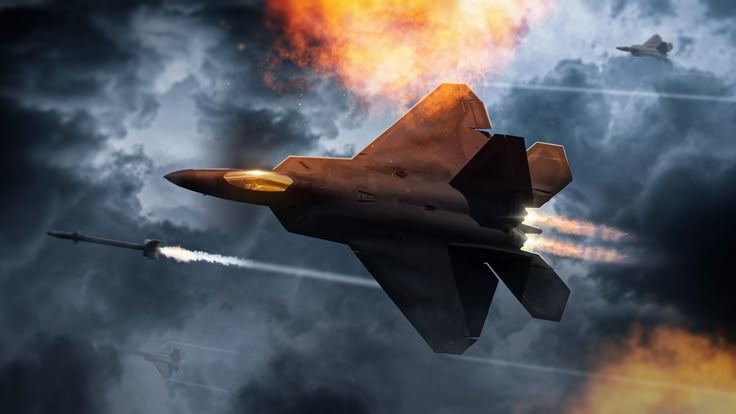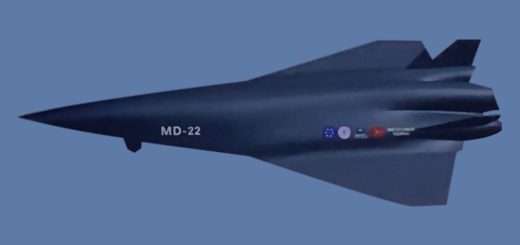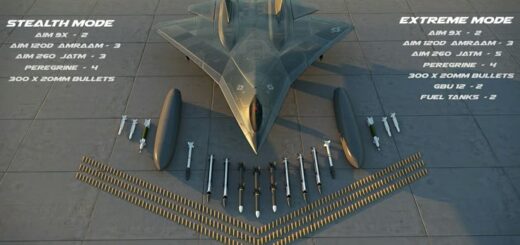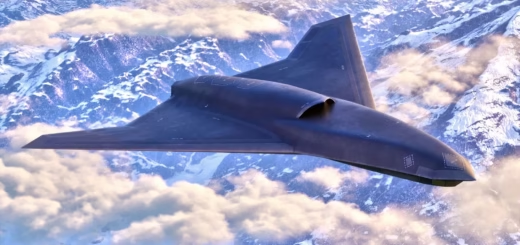Top Gun Pilots Explain How the F-22 Raptor is Unbeatable in Dogfights
Top Gun Pilots Explain How the F-22 Raptor is Unbeatable in Dogfights
The F-22 Raptor is unique among contemporary air superiority aircraft. It blends stealth, speed, situational awareness, and supermaneuvrability with innovative technology. However, the observations of veteran Top Gun and Air Force pilots are what really distinguish it in close-range combat, or “dogfighting.” According to these pilots, flying against the Raptor feels like “cheating,” “eye-watering,” and like a “beast” Task & Purpose.
This article explores the tactical and technological aspects that make the F-22 almost invincible in dogfights, emphasizing the crucial skills and tactics that provide it with such a strong advantage.

1. Super-maneuvrability & Thrust Vectoring
Its two-dimensional thrust vectoring, made possible by Pratt & Whitney F119 engines with nozzles that deflect ±20° in pitch , is the main factor for the F-22’s dominance.
This greatly increases agility, particularly at low speeds and high angles of attack, by enabling the jet to reroute engine power independently of its airframe.
Pilots explain:
Power Loop: A quick loop technique that uses thrust vectoring to deliver an incredibly accurate over-the-top punch. To great effect, Air Force demonstration pilots carry out this task.
The Raptor Slide is a controlled backward slide that maintains altitude while changing route and then exiting onto a new path.
J-Turn (Herbst maneuver):
A fast, tight reversal that uses the whole fuselage as a speed brake to decrease turn time by up to 30%.
When combined, these thrust vector-based maneuvers cause such confusion that veterans of the Air Force compare flying the F-22 to battling a “beast” or even believing your opponent is “cheating.”
2. High Angle-of-Attack Control and Aerodynamics
In addition to thrust vectoring, the F-22’s aerodynamic design is essential:
High alpha performance: Large control surfaces, vortex-generating chines, LERX, and all-moving stabilators allow the aircraft to maintain control at angles of attack greater than 60°.
Flat-spin illusion: Although certain shows’ movements look like a corkscrew or spin, the F-22’s differential nozzle and tail surface deflections let it to precisely regulate its rotation around its velocity vector, even at sharp angles.
This implies that F-22 pilots maintain control even in ordinarily unrecoverable attitudes, turning possible moments of loss of control into offensive weapons.
3. Integration of Fly-By-Wire and Flight Control Systems
The fly-by-wire (FBW) system of the Raptor is extremely advanced; it provides real-time control surface modification, actively stabilizes the aircraft, and is “departure resistant” even at the edge of the flying envelope.
The Flight Control System (FCS) actively checks the whole control surface range, as fans point out on forums, even joking that it “flails its bits around” to make sure every surface reacts flawlessly.
Pilots may concentrate on tactical advantage rather than aircraft constraints because to this “care-free handling.”
4. Energy Management and Thrust-to-Weight Advantages
Energy retention is crucial in dogfights. The thrust-to-weight ratio of the F-22 is close to or more than 1:1, enabling prolonged high-G maneuvers, quick reacceleration, and vertical missile exchanges.
the interest of the country.
Additionally, supercruise capability—sustained supersonic flight without afterburners (up to Mach 1.8)—reduces thermal/RCS signatures, conserves fuel, and offers consistent speed and range benefits. 5. Synergy between Situational Awareness and Stealth
The F-22’s stealth and avionics continue to be force multipliers despite close-quarters dogfights:
Low radar cross-section: Reduces adversary radar engagement windows and enables surprise and preemptive engagement.
The Distributed Aperture System (DAS) and AESA radar are part of the integrated avionics and sensor fusion system, which provides 360° coverage and target tracking before enemies ever detect the Raptor.
This implies that an F-22 is frequently in an advantageous posture by the time a competing pilot notices it is nearby.
6. Pilots’ Tactical Experience
Fighter pilots themselves are the true witnesses:
The agility of the F-22 is described as “eye-watering” by former F-15 operators.
“It really sucks to fight in a normal fighter against it,” someone said. It seems like cheating.
Veteran Navy pilot Vincent “Jell-O” Aiello said he felt dizzy after witnessing Maj. Gunderson perform a Power Loop.
7. Restrictions to Recognize
Platforms are not unbeatable. Among the noteworthy findings are:
German Eurofighter Typhoon pilots discovered during Red Flag drills that their aggressive turning and helmet-mounted sights could occasionally equal or surpass the F-22 WIRED in extremely close-range “merge” circumstances.
In some fighting scenarios, the F-22’s lack of a helmet-mounted cueing device impairs missile lock agility.
These are still uncommon edge occurrences in controlled settings, though, since the Raptor still has a significant advantage in long-range combat and air superiority.
In conclusion
The F-22 Raptor’s combination of stealth, thrust vectoring, energy management, sophisticated flight control technologies, and unparalleled pilot-perceived performance makes it possibly the most powerful air superiority fighter in history. The fact that Top Gun and seasoned pilots describe it as “eye-watering” and similar to “cheating” highlights the airframe’s superiority in dogfights.
The Raptor not only wins but also changes the laws of aerial battle with its Power Loops, Raptor Slides, J-Turns, high-angle control mastery, supercruise, radar invisibility, and sensor fusion.












